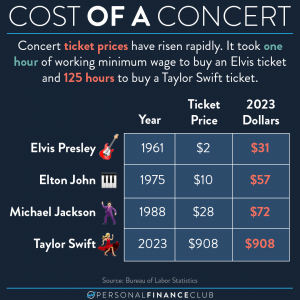
One of the most common questions I get is “how do I invest for my child’s future?”. It can be a confusing landscape, so I wanted to break down the options as simply as possible.
Preface: The “oxygen mask rule” applies

Many times when I get this question, it is from parents who are themselves in financial trouble. If you have debt other than a mortgage or are not yet investing enough to be on track for a healthy retirement, it’s not time yet to start investing for your children. You need to take care of your own finances before you are in a position to assist others. Take a look at the Phases of Investing. Saving for your children isn’t until step 5.
I honor and respect the intention. You weren’t given a financial head start by your parents, and you want to do better for your children. That is honorable and altruistic. But the best thing you can do for your children right now is set a good example, talk to them about money, explain why you are working through your own debt, and make sure you’re in a position not to be a burden when your child is an adult. If you end up ahead of the game, you can always gift them money later.
Option 1: Invest for yourself
Before you overcomplicate things, remember that you can always invest for yourself and simply gift your child money later. Putting it in their name doesn’t somehow amplify the future compound growth. (i.e. $50/month in your account could be gifted to them later as a lump sum to give your child a head start on their own compound growth). In 2020, the first $11,580,000 you give to a descendent as a gift or estate transfer in death is tax-free. Many people misunderstand the gift tax. It really only affects the very wealthy who will give more than that amount during their lifetimes. But it’s very likely, you don’t need to worry about that.
Pros:
- Ultimate flexibility. The money stays in your name and you can do what you want with it when you want.
Cons:
- May not be tax-optimal. Some of the accounts below offer a tax-break for saving for college or putting money in your child’s name. But if you haven’t maxed out your own tax advantaged accounts (IRA, HSA, 401, 403b, TSP, etc), investing in those first may still be the most tax efficient path. You can always name your children as beneficiaries on those accounts and/or in your will.
How to do it:
Follow the investing checklist. If it’s money you plan to spend on or gift to your child before you’re 59.5, you may want to put that in a regular taxable brokerage account to avoid early withdrawal fees from retirement accounts.
Option 2: Custodial Brokerage Account (UGMA/UTMA)
A custodial brokerage account is an investing account, you open on behalf of a minor. The crazy acronyms refer to laws that cover them (UGMA = Uniform Gift to Minor’s Act, UTMA = Uniform Transfer to Minors Act)
Pros:
- Modest tax benefit. The growth and income of the investments will be taxed at the child’s tax rate (often zero for smaller amounts).
- Flexible use. Unlike a 529, the money can be used for anything to benefit the child. There’s no requirement it be spent on college. The money can also be invested very flexibly, in basically any type of investment.
Cons:
- Child owns the money. Any money contributed to a custodial brokerage account is irrevocably owned by the minor. When your kid turns 18 or 21 (depending on your state) he legally can do whatever he wants with the money, and you have no say.
- May impact financial aid. If you are planning to seek federal financial aid the FAFSA formulas consider 20% of this money available to pay for college. A 529 (explained below) is likely a better account to save for college.
How to do it:
Head to a brokerage (like Vanguard, Fidelity or Schwab) and click the option to open a Custodial Brokerage Account (UGMA/UTMA). You’ll need the child’s social security number, and your state of residence. Once the account is open, you invest inside of it just as you would a brokerage account in your name.
Option 3: 529 Plan
A 529 Qualified Tuition Plan (QTP) is basically an account you can use to save for college for a chosen beneficiary. Note that option one above (simply investing in your own brokerage account) is an option, so the only reason you would choose to contribute to a 529 account is for tax savings. The tax benefit on 529 plans is pretty much like a “Roth” retirement plan. Post-tax money goes in, but then it grows tax-free and can be spent tax-free on qualified educational expenses.
Pros:
- Solid tax benefit. The growth and income of the investments will be tax free as long as the money is spent on educational expenses.
- No income limit. High income earning parents (and grandparents) can funnel some of their money into this tax-advantaged account no matter what their income.
- High contribution limits. Basically you can put as much as you want into a 529, but not more than the “amount necessary to provide for the qualified higher education expenses of the beneficiary.”
Cons:
- Limited to education expenses. This can’t be a generic “go be a trust fund baby” type account. In order to get the tax benefit, the money has to be spent on educational expenses. Although it’s pretty flexible in that regard (tuition at elementary, secondary, public, or private schools plus fees, books, supplies and equipment would all count). You can also change the beneficiary on the account. i.e. if your kid doesn’t go to college, pay for your neighbor’s kid! (Or a sibling perhaps)
How to do it:
So 529s are weird. They’re all run by the 50 states. So when you open a 529 plan account, you have to do so in conjunction with a certain state. That state doesn’t (usually) need to be where you live, or where the beneficiary goes to college. So you could live in California, invest in a Virginia 529 plan then go to college in Michigan. Why do they do it this way? No idea. Ask your legislator.
You can go right to a brokerage of your choice and open a 529 account. Here are the links for some popular ones:
When you walk through the steps to open one, you’ll have to choose the state for your plan. Fidelity chooses a default for you, which happens to be New Hampshire (I assume because of its nationwide flexibility). You can see where you make the choice here:

Choosing the investment options is a little weird. Kind of like a 401k, you choose from a set of pre-arranged options. Choosing an age-based index fund option is likely to provide the best returns, risk adjusted based on when you’ll need the money:

If you want, you can choose a custom strategy, like a three-fund portfolio of index funds as shown here:

That’s basically it! Once your 529 account is open, you can transfer money in or set up automated contributions. When educational expenses arise, you transfer money out to pay for them. Your brokerage will send you a tax form (1099-Q) that you file with your taxes.
Option 4: Custodial Roth IRA
A Custodial Roth IRA works in a similar manner as a regular Roth IRA, but is set up for children under the age of 18. Since minors generally cannot open an account at a brokerage on their own, the Custodial Roth IRA has an adult serve as the custodian on the account and is responsible for all decision making until the child is no longer considered a minor.
Pros:
- Tax favorable. The account is funded with after-tax dollars and grows tax free. Assuming the withdrawals are qualified, no taxes are ever owed by the minor. “Qualified” is explained in more detail in the “Limited access to funds” bullet below.
- Does not impact financial aid. Retirement assets are not taken into account when determining federal aid eligibility for college (FAFSA), as long as no withdrawals are made from the account.
- Earned income requirement. The child will need to have earned income in order to make a contribution to a Roth IRA. Earned income is money that is received from work (e.g., wages, tips, self-employment income) and does not include gifts.
- Contribution limit. The same limits apply as regular Roth IRAs. No more than $6,000 per year can be contributed and also no more than the total earned income. So, if the child earns $1,000, you can’t put $6,000 in there.
- Child owns the money. Similar to other custodial accounts, any money contributed is irrevocably owned by the minor and they can legally do whatever they choose with the money once they are no longer a minor.
- Limited access to the funds. Roth IRAs are retirement accounts and withdrawals can be made penalty free after the age of 59 and a half. There are some exceptions to this, including the ability to withdraw contributions (not earnings) without penalty. Also, you can withdraw up to $10,000 to use toward purchasing a home without any penalties or tax consequences.
Summary
Hopefully this helped demystify some of the issues surrounding investing for your kids. If I leave you on one note, it’s to remember not to let the complexity scare you off. You can always ignore all the fancy accounts and simply invest in a regular old brokerage account and gift the money away later (option 1). It’s ultimate flexibility and simplicity. If you want to seek out some tax optimization, then you can try options 2 and 3. At the end of the day, it’s all about spending less and investing more. If you don’t do that, perfectly navigating the tax code isn’t going to do you any good.





